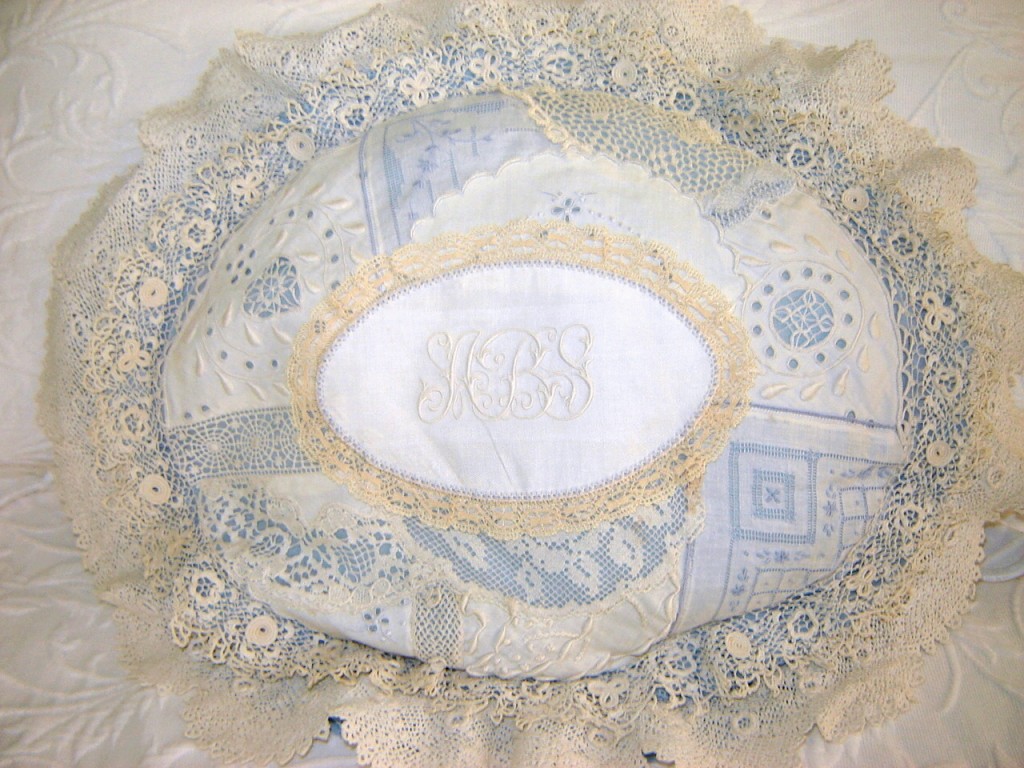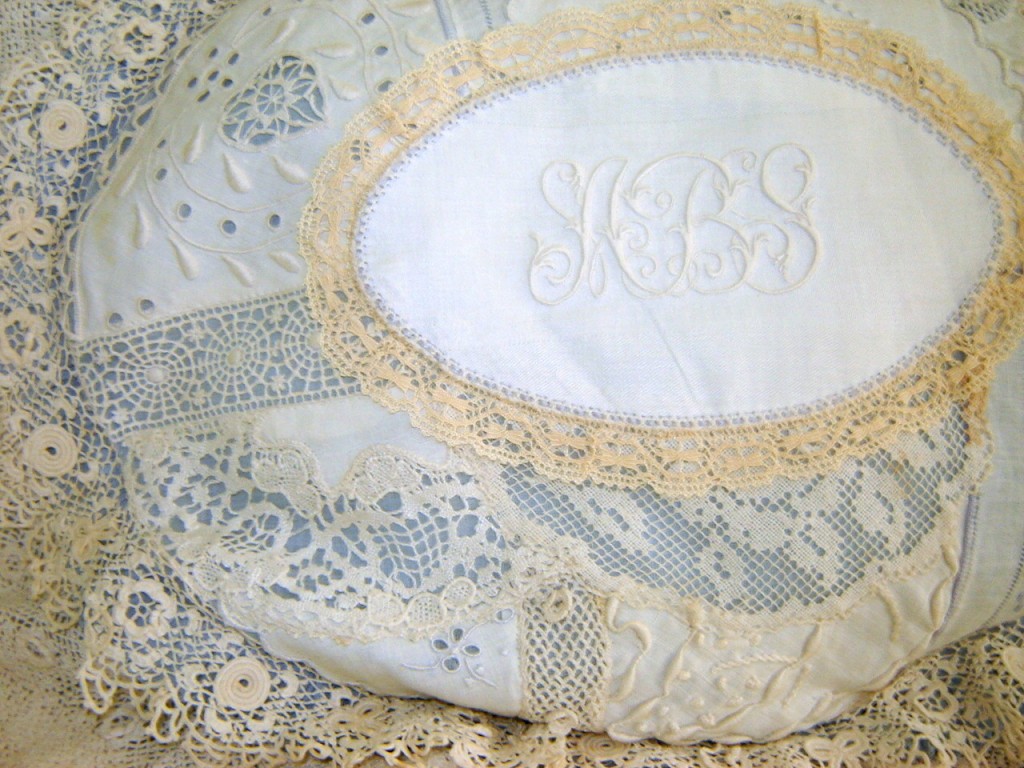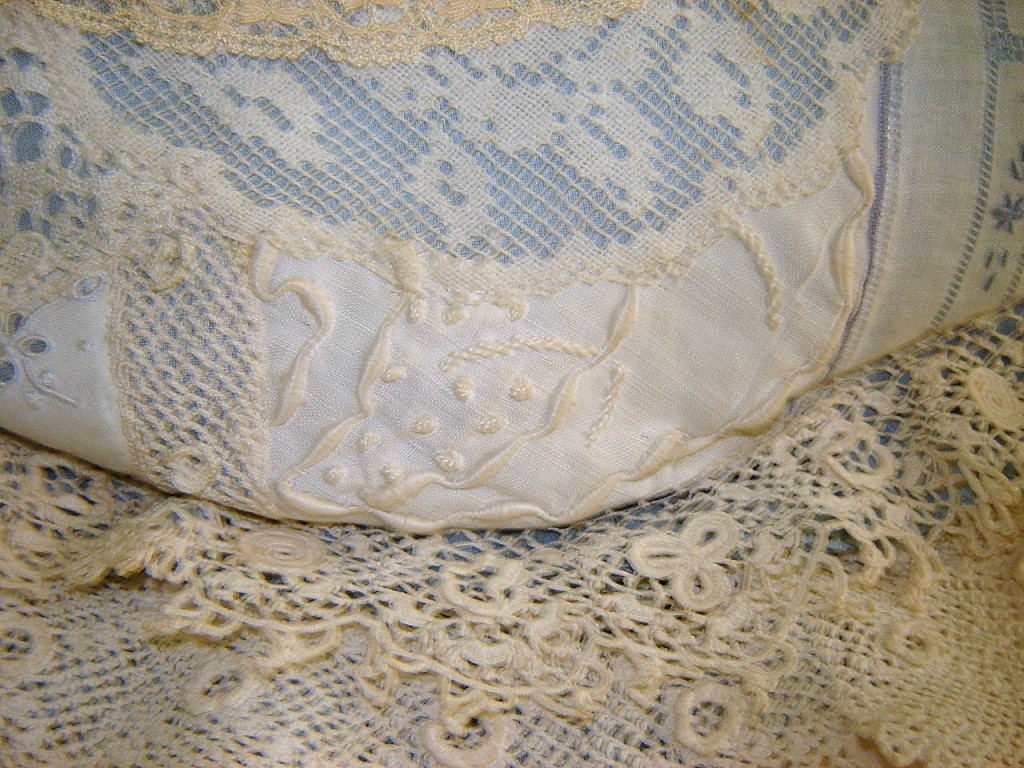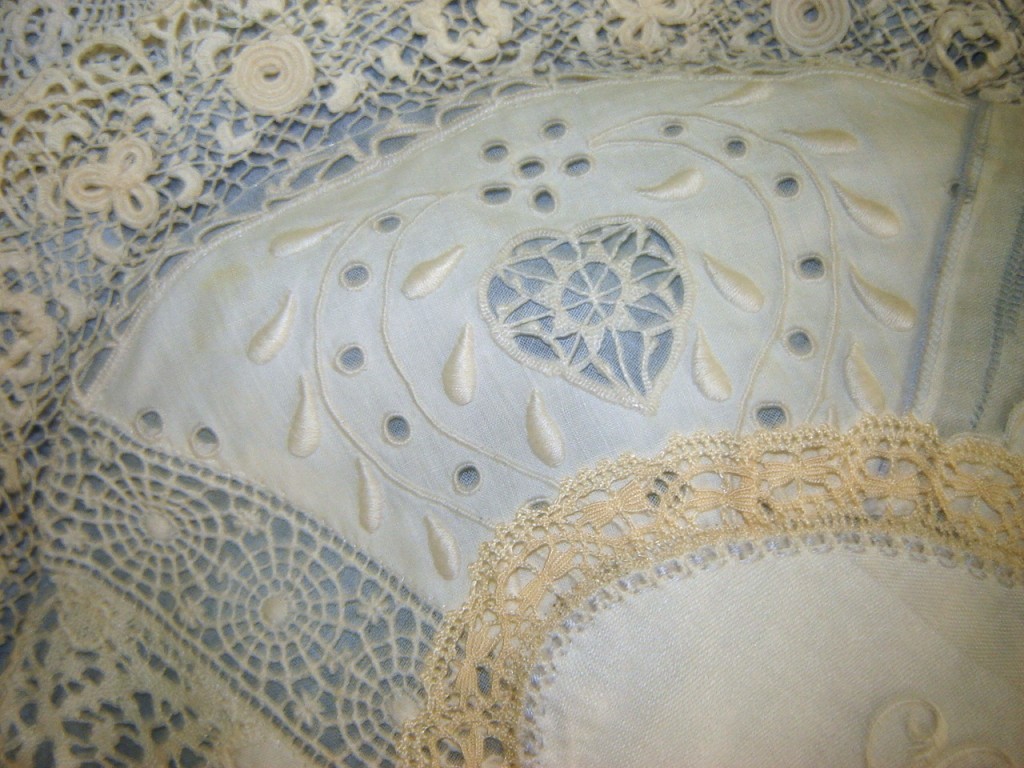
So often, bits and pieces are all that remains of what once was a spectacular piece of needlework. It’s likely that I have hoarding tendencies, because the idea of throwing away the beautiful stitches of an unknown and long since departed kindred spirit is abhorrent to me. And I have boxes of these bits and pieces to prove it.
So often, bits and pieces are all that remains of what once was a spectacular piece of needlework. It’s likely that I have hoarding tendencies, because the idea of throwing away the beautiful stitches of an unknown and long since departed kindred spirit is abhorrent to me. And I have boxes of these bits and pieces to prove it.
Crazy patch is my preferred technique for these items.  Pillows seem particularly suitable as they are laundered infrequently, putting the aged beauties at less risk of damage. This pillow is made of some of the remnants in my stash. Each tells a silent story, the tale of its origin which I plot out as I stitch the pieces together.
“ABS,†the monogram in the center oval, was a damaged napkin, one of a set of 12. In my sewing room, late at night, I am a lady Walter Mitty, daydreaming of the fantastic in my very common surroundings. To me, “ABS”  is Anna Belle Stonewater, a young society bride and these exquisite 22†linen dinner napkins were a part of her trousseau. All indications are that she was childless, or why would her children not have kept these lovely serviettes? She used these at a dinner party honoring Charles and Anne Morrow Lindbergh. Um-hmmm, she did.
 Coronation cord has always fascinated me, so I included this tidbit in the pillow. The cord is alternately thicker then thinner and is used most often for couching. I have several doilies and tabletoppers embellished with coronation cord, one from the home of Walt Disney. While he was imaginating Mickey and Minnie and the gang, he often sat his iced tea glass on one of these very doilies, on a coaster, of course.
Without careful examination, the coronation cord items in my collection could pass for padded satin stitch. I have also seen it used for beading, tacked down through the thin portion and the heavier part of the cord used for the vertical bars.
According to a leading authority on this cord, it first appeared in a Peterson’s magazine in 1875. It’s popularity increased through the years and then the cord disappeared from needlework catalogues in 1926 due to diminished interest. For more information about this unique textile, read about it here. http://www.fabrics.net/joan1100.asp
Because cutwork and other openwork pieces are included in the crazy patch, a blue foundation fabric is used so that the details can be more easily seen. Blue domestic organdy is also used for two ruffles which support the heavy Irish crochet trim around the oval pillow.

Irish crochet-- red haired immigrant sisters stitched this while sailing from Ireland. Paying attention to the intricate pattern kept them from being seasick.
I marvel at the detail and intricacy of the patterns and the rich texture that is created. I’m almost certain that  most of it was created by red-haired Irish immigrant sisters, Betsy Mae O’Connor and Kathleen Shannon Donovan as they sailed to their new home in America.     And they never got seasick.
The pieces at 11 o’clock and 3 o’clock were surely from a tablecloth owned by Wallis Simpson, Duchess of Windsor, and used at her infrequent dinner parties for royalty. She set a lovely table, but she was snubbed socially. I don’t think she could cook.
The handkerchief corners with drawn thread work were carried by Eleanor Roosevelt as something blue at her wedding to Franklin. She used it later to wipe away her tears.
I’m pretty sure this is all true.




